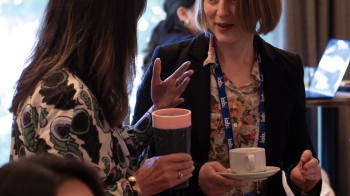Brand safety: Three key steps to stay in control of your digital advertising
Posted on Tuesday 01 February 2022 | Christie Dennehy-Neil
Christie Dennehy-Neil, Public Policy Manager at IAB UK explains what brands and marketers should be doing to keep their digital advertising safe.
Transparency is key to trust in many aspects of business. Digital advertising is no exception, and it’s fair to say that relationship has been in the spotlight recently. P&G Chief Brand Officer, Marc Pritchard has stressed the importance of taking action and ‘cleaning up the supply chain’ so advertisers know what they are buying.
Digital advertising is the smartest way to reach and wow your audience. At its best it’s targeted, measurable, engaging and effective. But to fully benefit from its capabilities, advertisers need to have confidence that legitimate concerns about where ads are being placed are being addressed. The good news is that there are already initiatives in place to promote brand safety by giving brands greater transparency and control over where their ads appear.
What you can do
1. When buying media, work with partners that offer choice and control, like the signatories of the Digital Trading Standards Group (DTSG) do, to reduce the risk of your ads being placed alongside inappropriate content. The DTSG is a cross-industry initiative under the governance of the Joint Industry Committee for Web Standards (JICWEBS), led by the IAB, ISBA, IPA and AOP. Find out more and see which companies are DTSG-accredited here.
2. Know what the ‘wrong’ place is. Beyond the obvious (e.g. number 3 below), brands need to specify the kind of content or environment that is undesirable or inappropriate for them. Ask your agencies and advertising delivery partners what controls they use to minimise ad misplacement. Have these important conversations when you’re planning online campaigns and reflect them in your contracts (an approach that is embedded in the DTSG Good Practice Principles).
3. Avoid illegal sites. The City of London Police Intellectual Property Crime Unit (PIPCU) oversee the ‘Infringing Website List’, a list of copyright-infringing sites. Ask the partners you work with to use the IWL to exclude pirate sites from their media buying (read more on how it works, and how to access it, here). This avoids the risk of ads appearing on pirate sites, lending the sites unwarranted credibility and funding criminal activity.
You can get a free, confidential ‘health check’ from PIPCU to see if your ads are appearing on pirate sites and if so, how they got there. To take this up, contact DC Salway on [email protected]. After all, if you know what’s wrong, you can fix it.
We’re here to help
For more information or advice about the DTSG contact [email protected]. For details about the IWL contact [email protected].
Related content
CAP issues updated LHF guidance for consultation
Learn moreGovernment confirms brand ads exemption in LHF ad ban
Learn moreIAB UK responds to ICO call for views on regulatory approach to low-risk advertising
Learn moreReshuffle embeds digital and advertising expertise across government
Learn more
Fast forward to 2030 with Futurescape
An in-depth exploration of the attitudes, innovations and media shifts that will shape the years ahead and redefine how we advertise by the turn of the decade



